Dean Fleming was born and raised in Sonora, CA, the gateway to Yosemite Valley. Once the youngest certified professional climbing guide in the country, he eventually combined his love of writing, photography, earth science, and rock climbing into a career of sharing his stoke and expertise through publishing. Dean is the author of the Columbia Bouldering Guidebook and the founder and editor of California Climber Magazine. In this series, he’ll be sharing a taste of some lesser-known, high-quality climbing areas in our favorite state, plus how to take care of these special places for years to come.
Words and images by Dean Fleming. This article was originally published in the Summer 2015 issue of CA Climber.
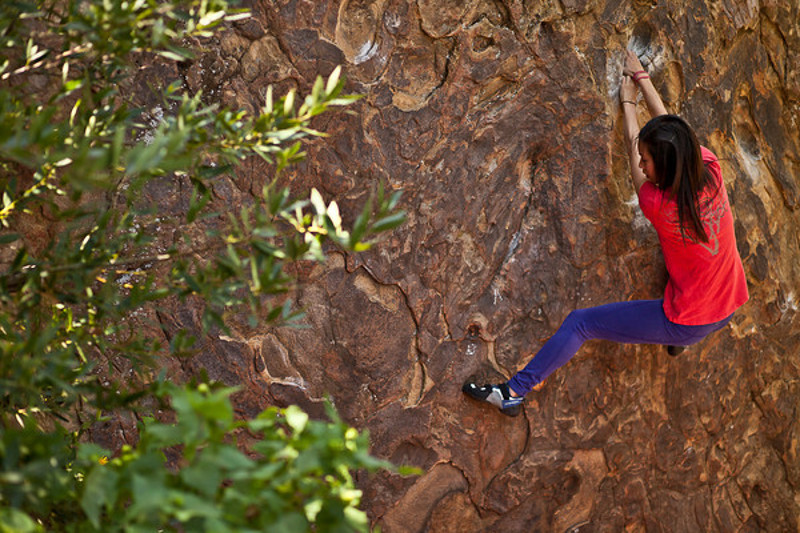
In May of 2009, just a few miles inland from the city of Santa Barbara, a spark from a power tool ignited flames on the Jesusita Trail in the Santa Ynez Mountains. The Jesusita Fire spread quickly through the steep canyons, sandstone rock outcroppings and dry hillsides of the Santa Ynez. By May 8, 2009 the breadth of the fire extended from west of Highway 154, across the front country of the Santa Ynez Mountains, to the east, through Mission Canyon, Rattlesnake Canyon, and into the hills above Montecito. Before it was fully contained, the Jesusita Fire destroyed 80 homes, damaged 15 others, and caused 28 non-fatal injuries. The fire is regarded among the region’s most severe wildland fires of the decade—yet if it hadn’t occurred, one of Santa Barbara’s finest sandstone bouldering destinations might have never reached its full potential.
The fire is regarded among the region’s most severe wildland fires of the decade—yet if it hadn’t occurred, one of Santa Barbara’s finest sandstone bouldering destinations might have never reached its full potential.
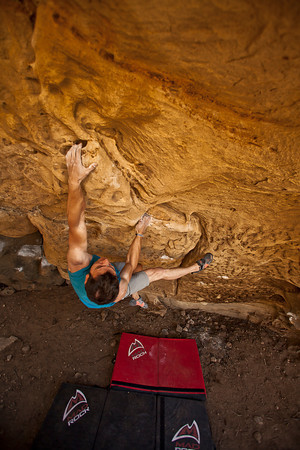
Hidden among the chaparral and often protected by its dense brambles, an astounding wealth of sandstone can be found in the Santa Barbara foothills. Along the region’s coastal ridges, the Chumash Native Americans celebrate the sculpted rocks for their hospitality and spiritual wealth. The Chumash painted incredible designs inside cave formations in the Santa Ynez with pigments made from plentiful minerals. Hematite, gypsum, and magnesium oxide were mixed with water and animal fats, and then applied to the interior of the sandstone caves to form some of the most spectacular and expansive Native American art on the West Coast. Today, the Chumash Painted Caves are rightfully protected; however, many other sandstone formations are cherished by the rock climbers who venture farther into the thick undergrowth.
Along the region’s coastal ridges, the Chumash Native Americans celebrate the sculpted rocks for their hospitality and spiritual wealth.
Just a few miles northeast of the Chumash Painted Caves, El Camino Cielo Road makes a direct but winding passage to a scenic panoramic vista. The road is a popular sunset drive in the Santa Barbara region, and on any given weekend day, hikers and rock climbers alike wind their way up the narrow paved road to reach the more barren rock landscape near its summit. Here, visitors can see hundreds of interesting sandstone features for miles in every direction. Day hikers usually end their trips at the more convenient sunset vantage points, but over the last 30 years, rock climbers have explored the hard-to-reach boulders at the farthest sections of the ridgeline.
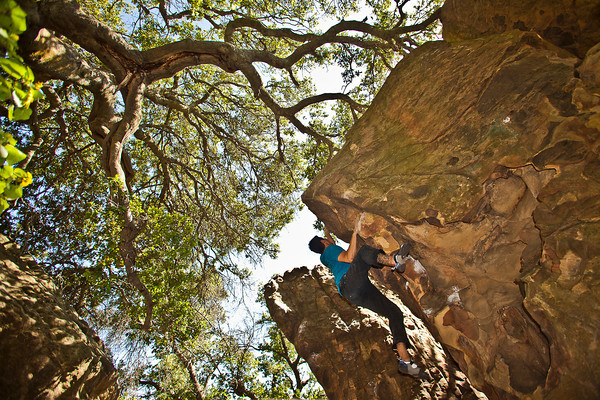
Smooth, rounded holds and bald topouts generally define the bouldering along Santa Barbara’s El Camino Cielo Road. Because of this, a relatively small bouldering destination called The Brickyard is steadily becoming renowned for its wealth of steep and heavily featured boulder problems. The Brickyard certainly has one of the highest concentrations of difficult gymnastic boulder problems in the region, but the area is perhaps equally well-known for its withdrawn wilderness atmosphere.
The Brickyard certainly has one of the highest concentrations of difficult gymnastic boulder problems in the region, but the area is perhaps equally well-known for its withdrawn wilderness atmosphere.
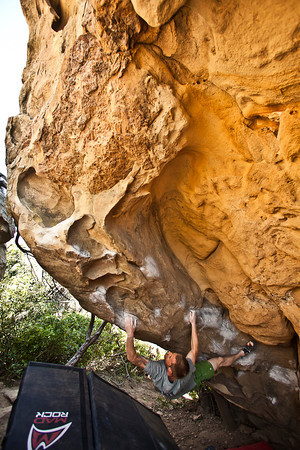
Avid Santa Barbara-area rock climber Marc Soltan was among the first climbers to thrash down the thick brush that encases the boulders of the Brickyard. “By the time I was alerted to this so-called secret area, a very narrow and primitive path to it had already been established,” says Soltan. “Although the path was no more than seven minutes from the road, it was covered with heavy brush and poison oak, not to mention rattlesnakes.” Although a significant amount of classic problems in the area were bouldered or toproped early on, many of the boulders at The Brickyard remained undiscovered until the Jesusita Fire swept over the hillside in 2009. The fire was devastating to home owners and to the natural ecology of the region, but the deforestation allowed climbers to more easily explore the hills for bouldering potential. Although charred manzanita trees still dot the undergrowth—their stark skeletons strewn along the now mostly green landscape—some very large oak trees survived the blaze to provide shade and beauty to The Brickyard boulders.
[…] Many of the boulders at The Brickyard remained undiscovered until the Jesusita Fire swept over the hillside in 2009.
Today, these stones are becoming increasingly popular for their fantastically steep and gymnastic problems on incredible incut edges, deep pockets and positive hueco features. The Brickyard is perhaps best known for its overhanging problems like Watch the Dog (V5), Soot Patrol (V7) and Dancing Outlaw (V8); however, climbs like Extremist (V1), The Yeti (V4), Charlotte’s Web (V3), and the incredibly soft Smooth Criminal (V6) keep visitors on their toes with a nice selection of archetypical Santa Barbara sandstone slopers and technical topouts.
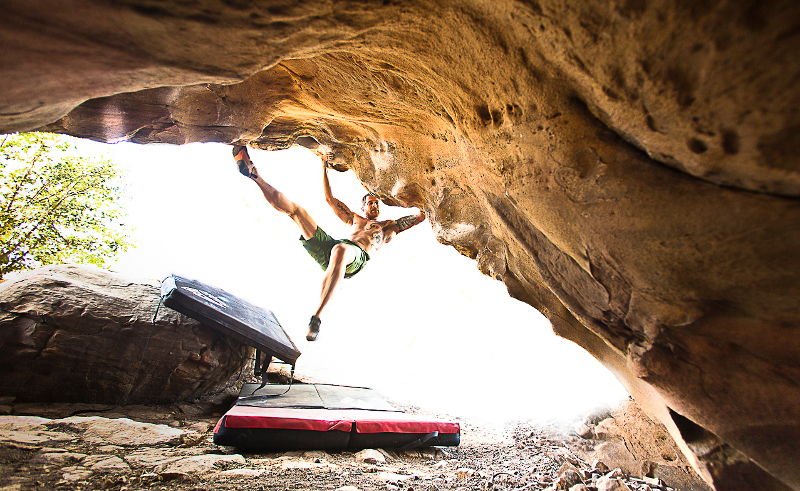
Special Concerns
The Brickyard is not only a fantastic resource for steep bouldering in the Santa Barbara area; it is also revered by local climbers for its unique formations and beautiful landscape. As with any sandstone climbing area, the holds are extremely friable when wet or damp. Please allow the rock to fully dry before attempting to climb here or the surrounding sandstone areas. Campfire pits and smoldering coals have been discovered recently among the boulders, but please note that camping is illegal at the boulders and campfires are strictly prohibited. If you find a campfire ring, please destroy it.

